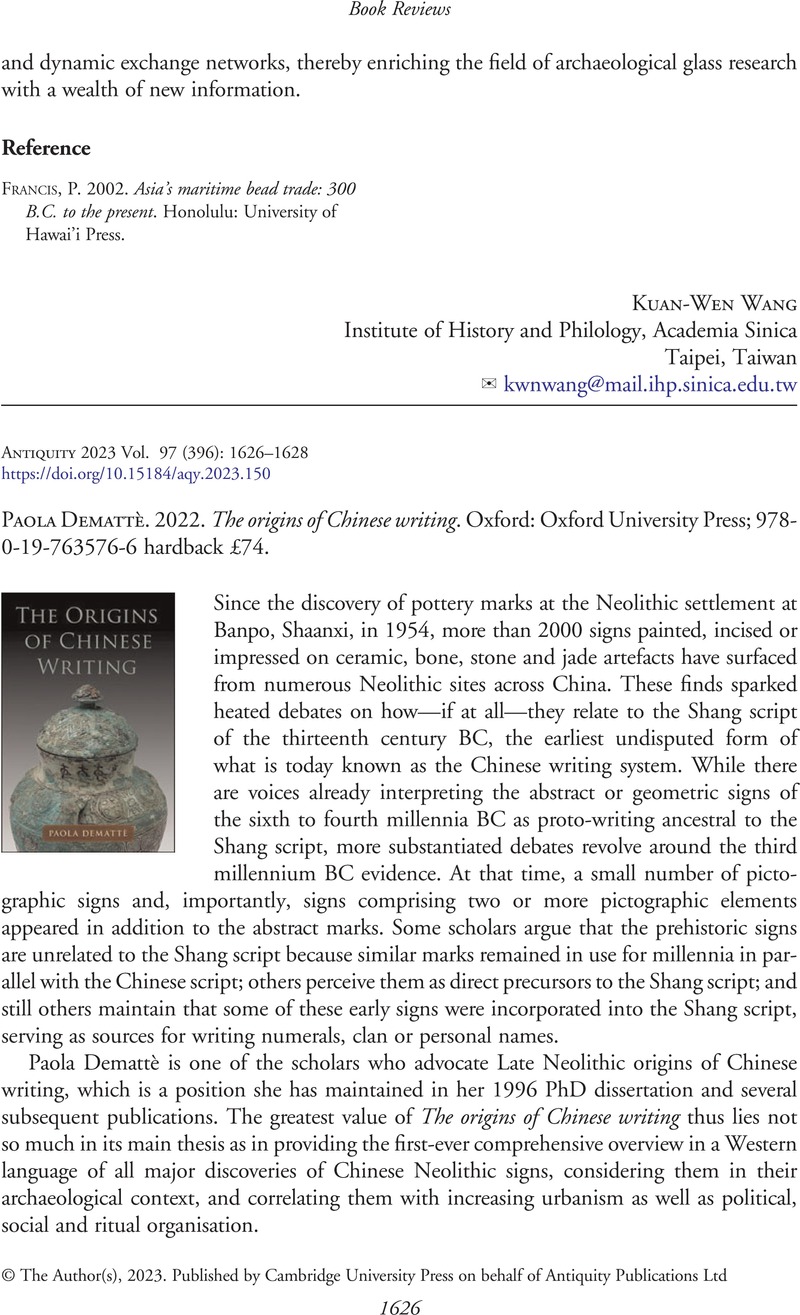No CrossRef data available.
Paola Demattè. 2022. The origins of Chinese writing. Oxford: Oxford University Press; 978-0-19-763576-6 hardback £74.
Review products
Published online by Cambridge University Press: 16 October 2023
Abstract

- Type
- Book Reviews
- Information
- Copyright
- Copyright © The Author(s), 2023. Published by Cambridge University Press on behalf of Antiquity Publications Ltd


